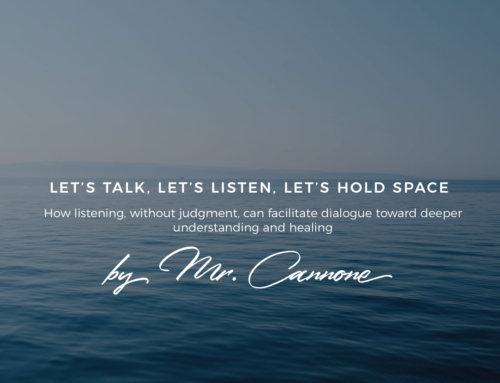When I first started as a teacher, I struggled with implementing an effective three-part lesson plan – specifically, one that would have a strong minds-on to spark wonder and engage! I was always so worried that my lesson wasn’t “engaging” enough but what I soon realized was that the “minds-on” part of any lesson doesn’t always need to be a circus-act… or a teacher dressed up in costume. If you’re reading this and you’re a teacher, I bet that dressing up in costume for a lesson has crossed your mind at some point in your career. Don’t deny it!
Some of the most thought-provoking discussions in my classroom have found their origin at various points within a lesson, through an open-ended problem, visual, or video. There’s no template for what an effective hook or “minds-on” should be and there’s no rule for when it should be introduced. Oftentimes, the most meaningful classroom discussions may lead to a student making a connection to a news story or Youtube video, thus prompting even more questions. The unofficial criteria that I have followed is that a “minds-on” should stimulate ideas and most importantly, spark curiosity. From the perspective of a former news reporter, I recall talk in the newsroom to always begin a broadcast with a teaser of some sort, or a news story that would immediately grab hold of the viewer’s attention. Similarly, in the classroom, I find that student interest is piqued with stories or problems of relevance that “hit home”, are topical, and elicit shock, anger, or humor.
One of my favourite resources to support Inquiry at any grade level is, “The Capacity Building Series on Inquiry Based-Learning”, published by the Government of Ontario. This document emphasizes the critical role educators play as “provocateurs”, finding creative ways to introduce students to concepts and ideas that will offer “inquiry potential” for students to engage in a sustained inquiry of their own. Over the years, I have seen success in the following “hooks” that have sparked curiosity amongst my students, leading to rich discussions and further student-inquiry. So here they are… A list of some lesson hooks and ideas that may provoke students and lead to rich discussions in the classroom and beyond.
- News updates/Push notifications on the computer.
Although annoying for some, “push notifications” from news sites, can serve as unexpected moments to learn something new throughout the day. During a Science unit on Space exploration, I turned on the “push notifications” from www.space.com and at various times during lessons or work periods, a notification would appear on the computer screen in class. Students loved seeing updates on space missions or space discoveries. These notifications also led students to further research a news story of interest during our independent inquiry.
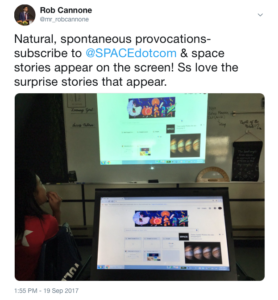
2. Invite students to create or solve problems for real and relevant situations.
Something as simple as helping the librarian promote the book-fair or assisting the Principal with designing a new route for the Terry Fox Run, could lead to the creation of meaningful work. Students are always interested in creating something that serves a purpose for a real audience – their school community!


3. Excite students with events planned throughout the Unit.
For a unit of study related to the contributions and challenges of immigrant groups in Canada, I invited the ancestors of Chinese railroad workers to speak about their family stories of life on the railroad. For another unit on Space, I set up a calendar of exciting events related to various topics throughout the unit. Students were able to look forward to these events as they supplemented the learning and led to further discussion outside of the classroom.
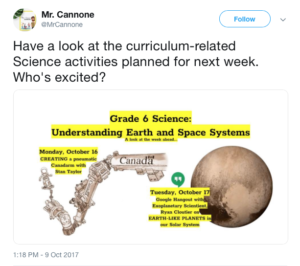
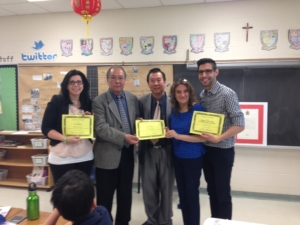
4. Set up a media museum and allow students to discover on their own.
Using QR codes and I-Pads, curate content (videos, websites, or photos) related to a unit of study. At their leisure, students can view the content you have selected and make sticky notes of their wondering to leave behind for other students to see. Students added to the ideas and opinions of others and when it came time to produce a writing piece, students were able to use the ideas of their peers. This post-it pile-up greatly assisted reluctant writers and students who had difficulty generating ideas.

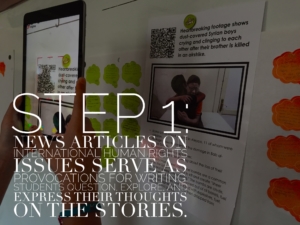
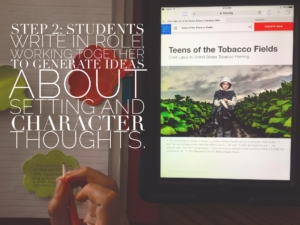
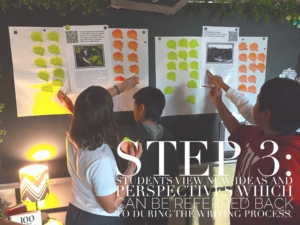
Although the aforementioned ideas are teacher-directed, I encourage teachers and parents to be responsive to student ideas and interests. For example, if a student mentions a story from the news or the Internet, consider introducing this story as a provocation in Language Arts or Science. At the heart of each of these “hooks”, I hope that both educators and parents find joy in engaging their children in the recursive process of questioning, sharing, and further exploring a topic of interest. This process is one that never ends and is one that, with ongoing exposure, will help students to think more critically.
I would love to hear from you and the ideas that you may have about ways to cultivate curiosity in the classroom. Thank you for reading this post.


